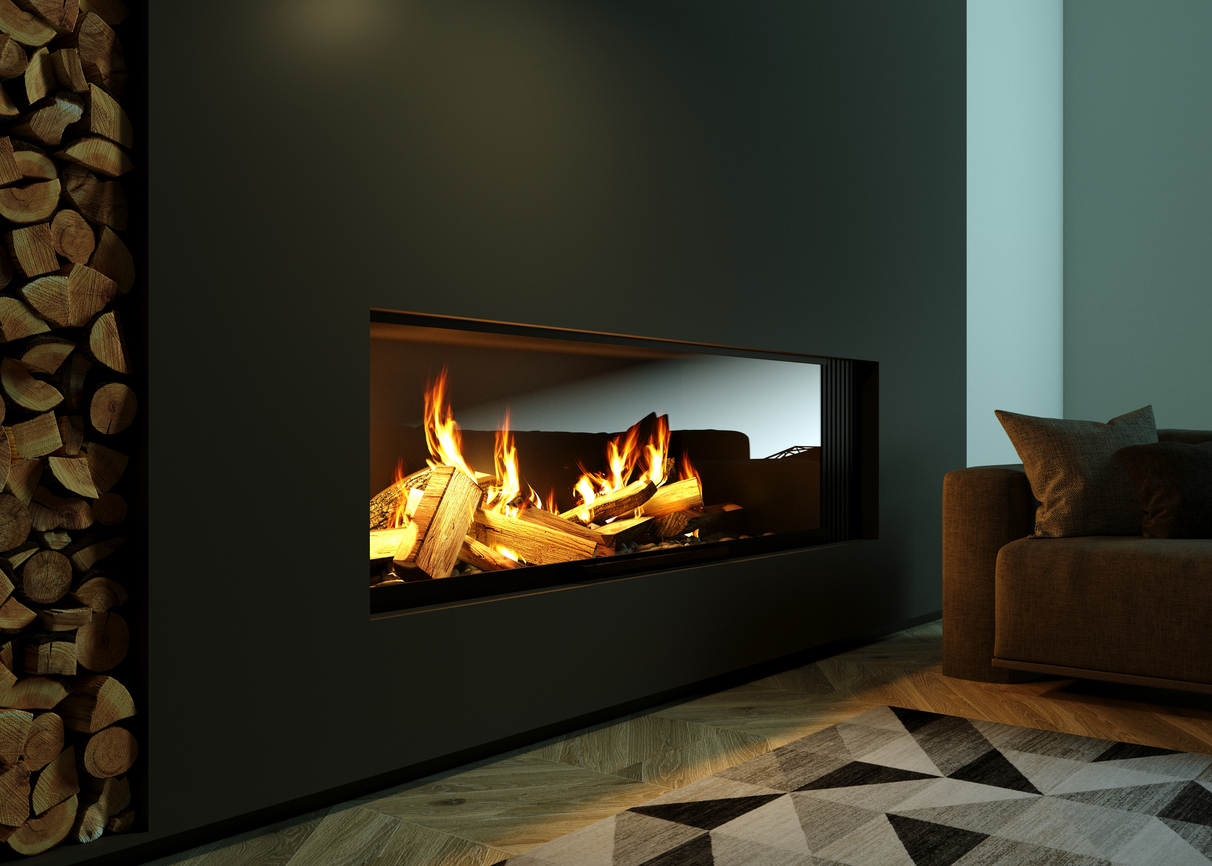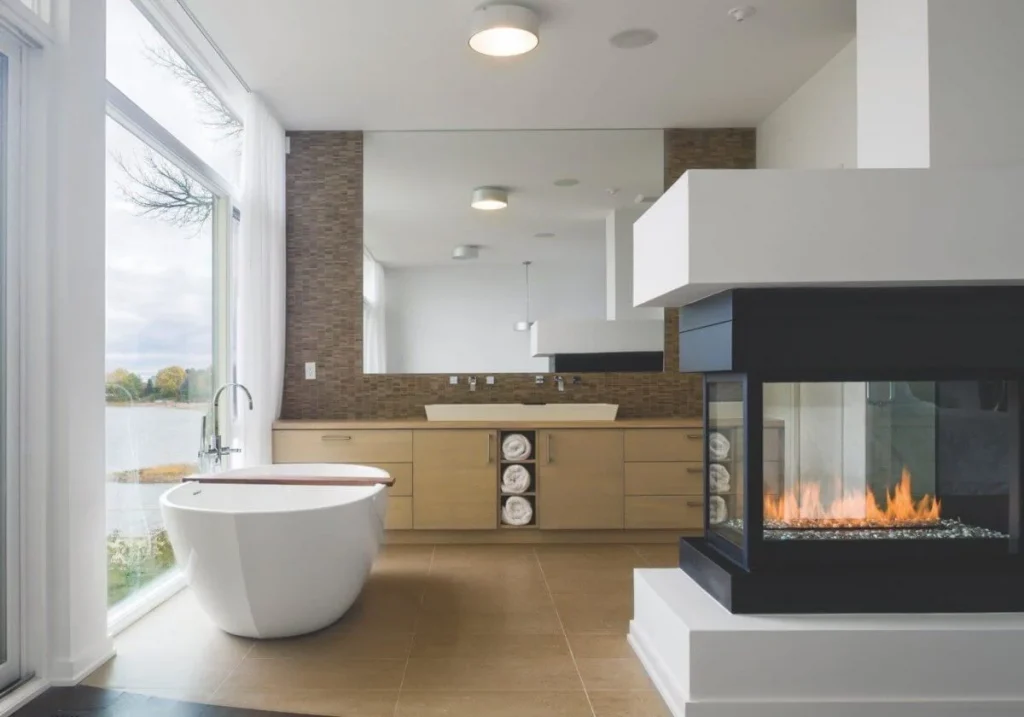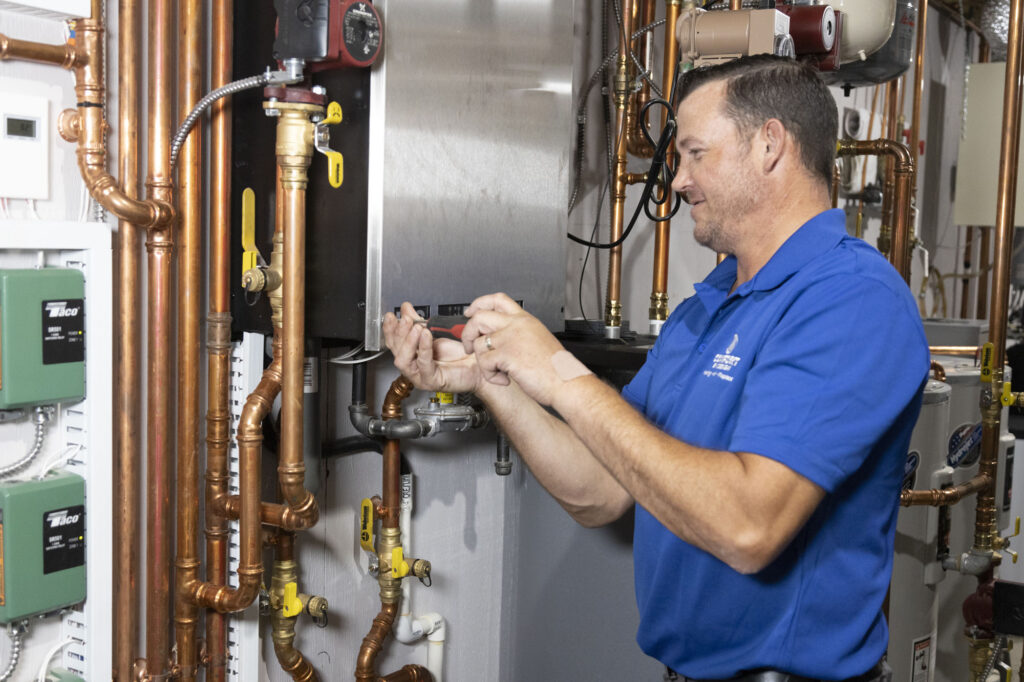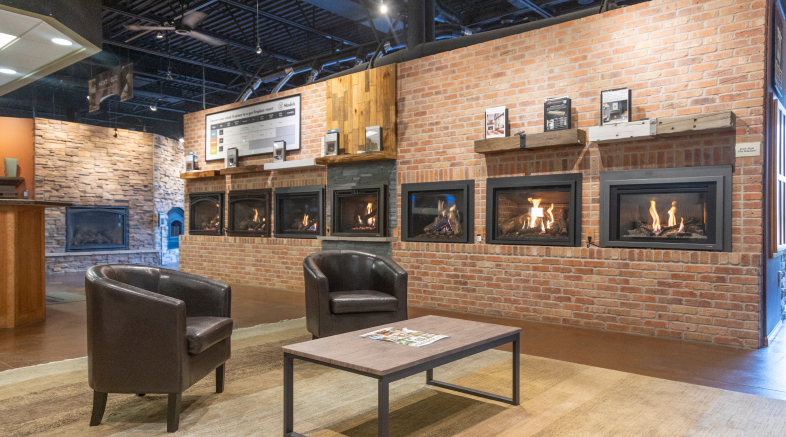Blog
Are Gas Fireplaces Safer Than Wood Fireplaces?

A cozy fireplace adds warmth and ambiance to any home, but safety should always be a top priority when choosing a new fireplace. So, are gas fireplaces safer than wood? While both options provide warmth, they come with distinct safety considerations.
At Comfort By Design, we specialize in helping homeowners find the best fireplace solutions with safety, efficiency, and style in mind. Whether you're considering gas or wood options, our experts can guide you toward the safest and most suitable option for your home.
Are Gas Fireplaces Safer Than Wood?
Gas fireplaces are widely regarded as the safer option due to their enclosed flames, minimal maintenance, and lower risk of hazardous emissions. Unlike wood-burning fireplaces, which require careful handling of logs, open flames, and proper ventilation, gas fireplaces operate with a simple switch or remote control. They also eliminate the risks of flying embers, chimney fires, and excessive carbon monoxide buildup. Of course, gas fireplaces are not entirely risk-free and require proper installation and regular inspections for safe operation.
Gas Fireplaces vs. Wood Fireplaces: Key Safety Differences
Gas fireplaces pose a lower fire hazard risk than wood fireplaces. Their enclosed combustion design reduces the chances of accidental fires, while wood fireplaces, with their open flames and embers, present a higher risk of sparks igniting nearby materials.
Gas fireplaces burn cleanly with minimal emissions, making them a better choice for maintaining indoor air quality. However, poor ventilation in a gas fireplace can lead to carbon monoxide leaks. Wood fireplaces release smoke, particulates, and creosote buildup, which can negatively affect air quality and pose health risks.
Gas fireplaces require little upkeep beyond an annual inspection, while wood fireplaces demand frequent cleaning, chimney sweeping, and ash removal to prevent hazardous buildup. Creosote accumulation in chimneys can increase the risk of dangerous chimney fires if not addressed regularly.
Both options have some carbon monoxide risk. Gas fireplaces produce small amounts, requiring carbon monoxide detectors for safety, while wood fireplaces can release larger amounts if not properly ventilated. Additionally, gas fireplaces are more convenient to use, operating with a simple switch or remote. Wood fireplaces, however, require firewood storage, manual fire-starting, and ongoing monitoring to maintain a safe, controlled fire.
Modern Wood Fireplaces Are Typically Safer Than Older Models
Although traditional wood fireplaces have higher safety risks, modern advancements have made them much safer. Today’s EPA-certified wood fireplaces include improved combustion technology, better airflow control, and advanced sealing to minimize emissions. Additionally, newer wood stoves and inserts offer better heat efficiency while reducing creosote buildup, a leading cause of chimney fires. If you prefer the rustic charm of a wood fireplace, investing in a modern, high-efficiency model can significantly enhance safety.
Making the Right Choice for Your Home
Consider these factors when making your decision:
- Household Safety Needs: Homes with young children or pets may benefit from the enclosed design of a gas fireplace.
- Maintenance Commitment: If you prefer minimal upkeep, gas fireplaces require less frequent cleaning and maintenance.
- Air Quality Concerns: Gas fireplaces burn cleaner, while wood fireplaces release more emissions.
- Power Outages: Wood fireplaces work during power outages, whereas gas fireplaces may require electricity unless they have a battery backup.
A Professional Fireplace Expert Can Help You Decide
Still unsure which fireplace is right for you? Consulting a professional can help you navigate your options based on your home’s needs and safety requirements. At Comfort By Design, our expert technicians have over 20 years of experience in fireplace installation and safety. We offer both wood fireplaces and gas fireplaces, so you'll be able to find the perfect fit for your home.
Talk to a Fireplace Expert
In general, gas fireplaces offer greater safety due to their enclosed flames, cleaner emissions, and lower maintenance requirements. However, modern wood fireplaces have improved safety features that make them a viable option for those who prefer a traditional look and feel.
If you're ready to install a new fireplace or upgrade your existing one, our team at Comfort By Design is here to help. Contact us today at (715) 201-8407 or visit one of our showrooms to explore your options. Your comfort and safety are our top priorities!










